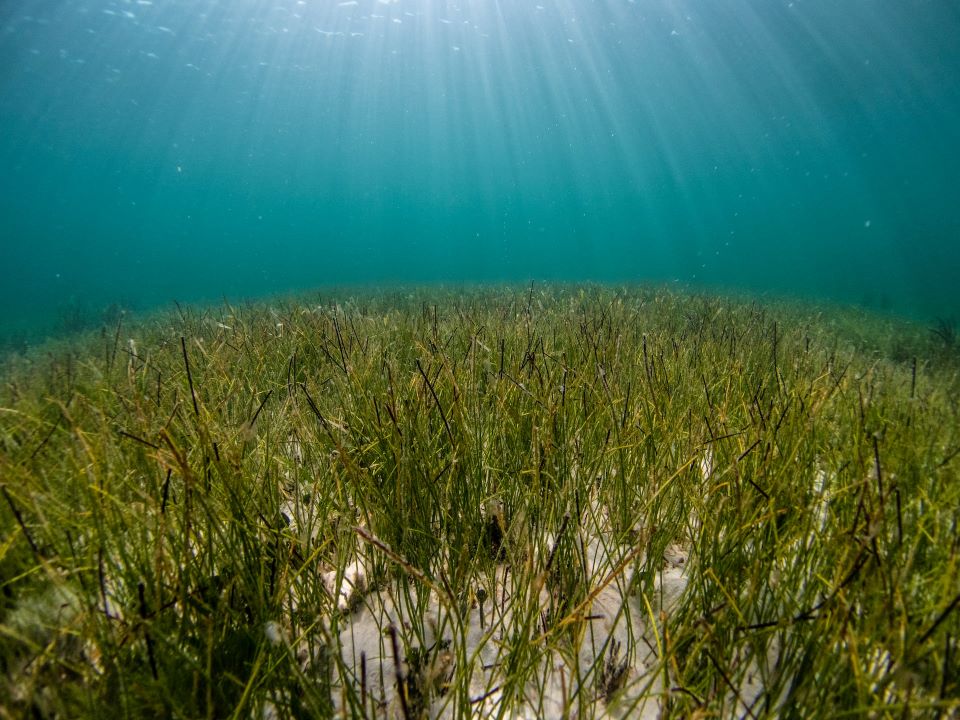Tiger sharks monitor unknown places on the ocean floor near the Bahamas. So scientists installed cameras on their fins. As a result, the research team discovered up to forty percent more sea meadows and other previously unknown sites. According to them, uncovering new places can help with different solutions to the climate crisis.
Underwater Researchers Discover Sea Meadows
Sharks have become the new “team members” of marine scientists, thanks to their reputation for fearless behavior. Wild predators, which grow up to five meters in length, according to the latest research, unlike other shark species, are not frightened by strong storms or hurricanes and remain in deep waters during them.

To measure the extent of seagrass beds in the Bahamas, researchers attached cameras to the dorsal fins of tiger sharks to access hours of footage from the ocean floor. According to them, the obtained data revealed the largest known seagrass ecosystem in the world, which is spread over ninety-two thousand square kilometers of the Caribbean seabed.
Sharks Unlock the Secrets of the Deep
Sea meadows have been underexplored. Their total area worldwide estimates range from 160,000 to 1.6 million square kilometers. However, mapping them is highly challenging, as grass beds in deep or turbid waters cannot always be observed from aircraft or satellites. Smaller meadows can then be sparse or intertwined with other sea plants, making them difficult to identify.

Site-mapping sharks are an ideal solution for research teams, as seagrass meadows must be verified site-by-site, and sending divers to photograph large areas of the ocean floor is expensive, logistically demanding, and very slow. According to a research team called Beneath the Waves, tiger sharks can swim to considerable depths, have a large reach, and spend a lot of time in seagrass meadows
Seagrasses are also important hatcheries and food sources for many marine species. They are also a significant source of “organic carbon” because they capture and store vast amounts of carbon on the seabed, making them an essential tool for mitigating the climate crisis. Yet they are threatened by many factors, including shipping, coastal development, and increasingly extreme weather. It is estimated that approximately seven percent of seagrasses worldwide disappear each year.
Source: theguardian.com/environment/2022/nov/05/scientists-discover-worlds-largest-seagrass-forest-by-strapping-cameras-to-sharks, photo credit: Gerald Schömbs on Unsplash
Image credit: https://beneaththewaves.org/















